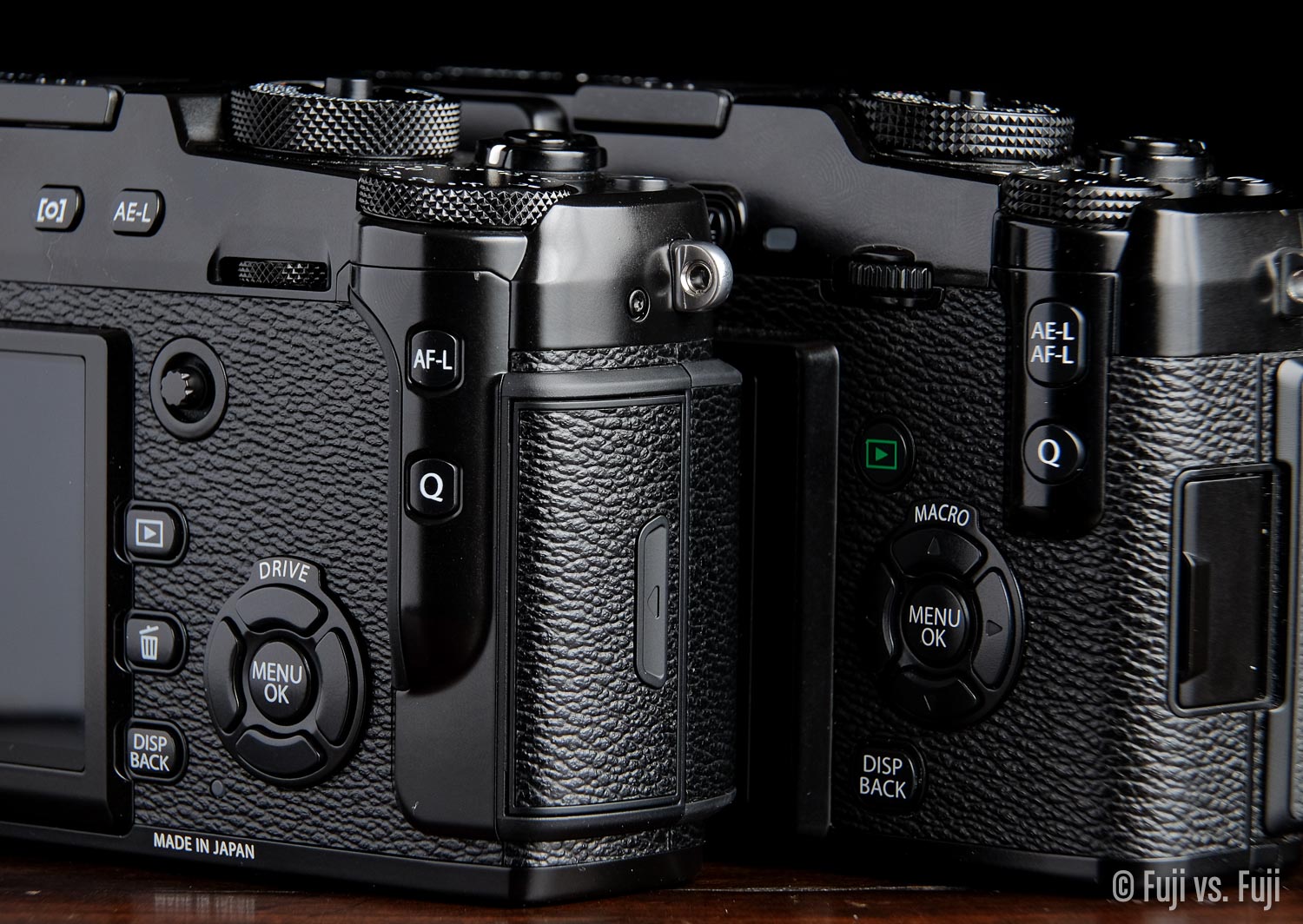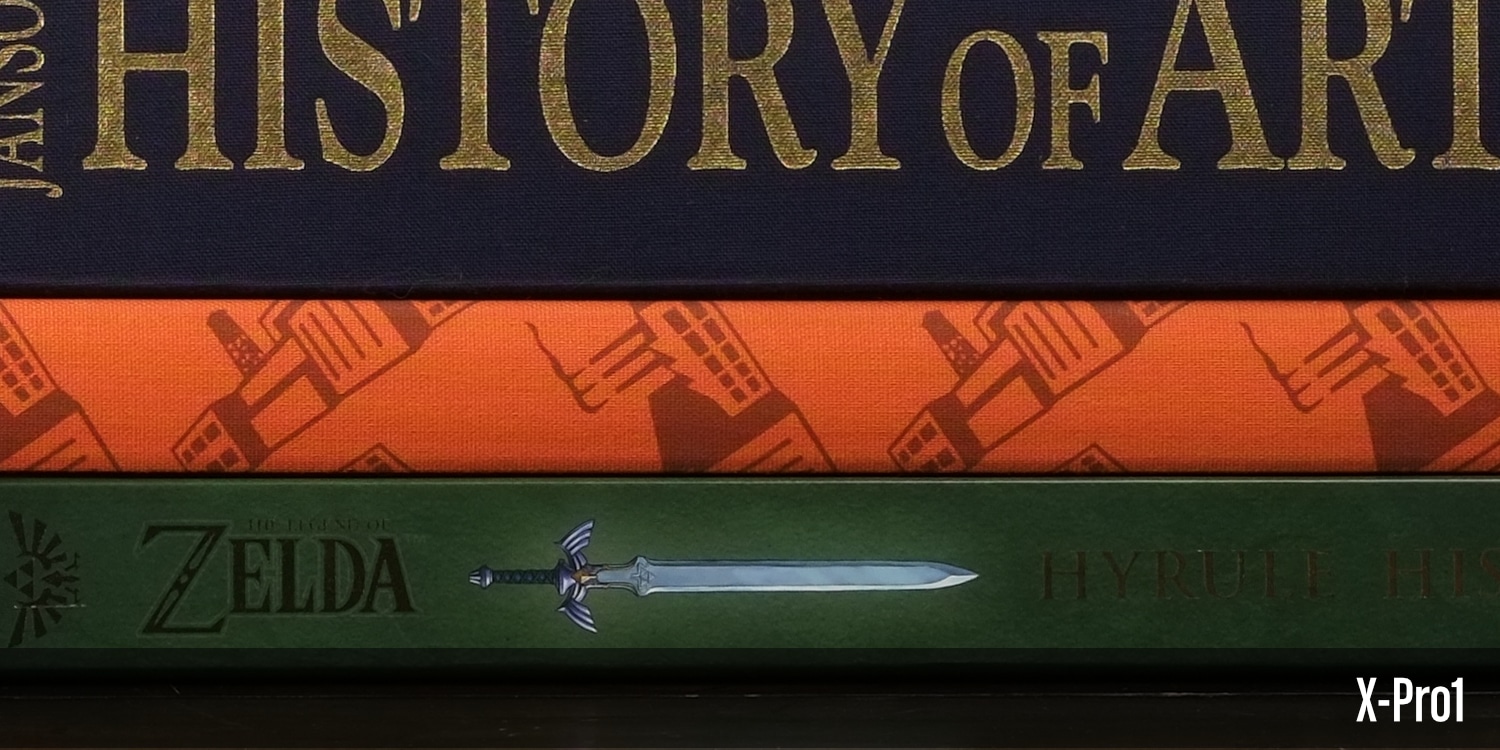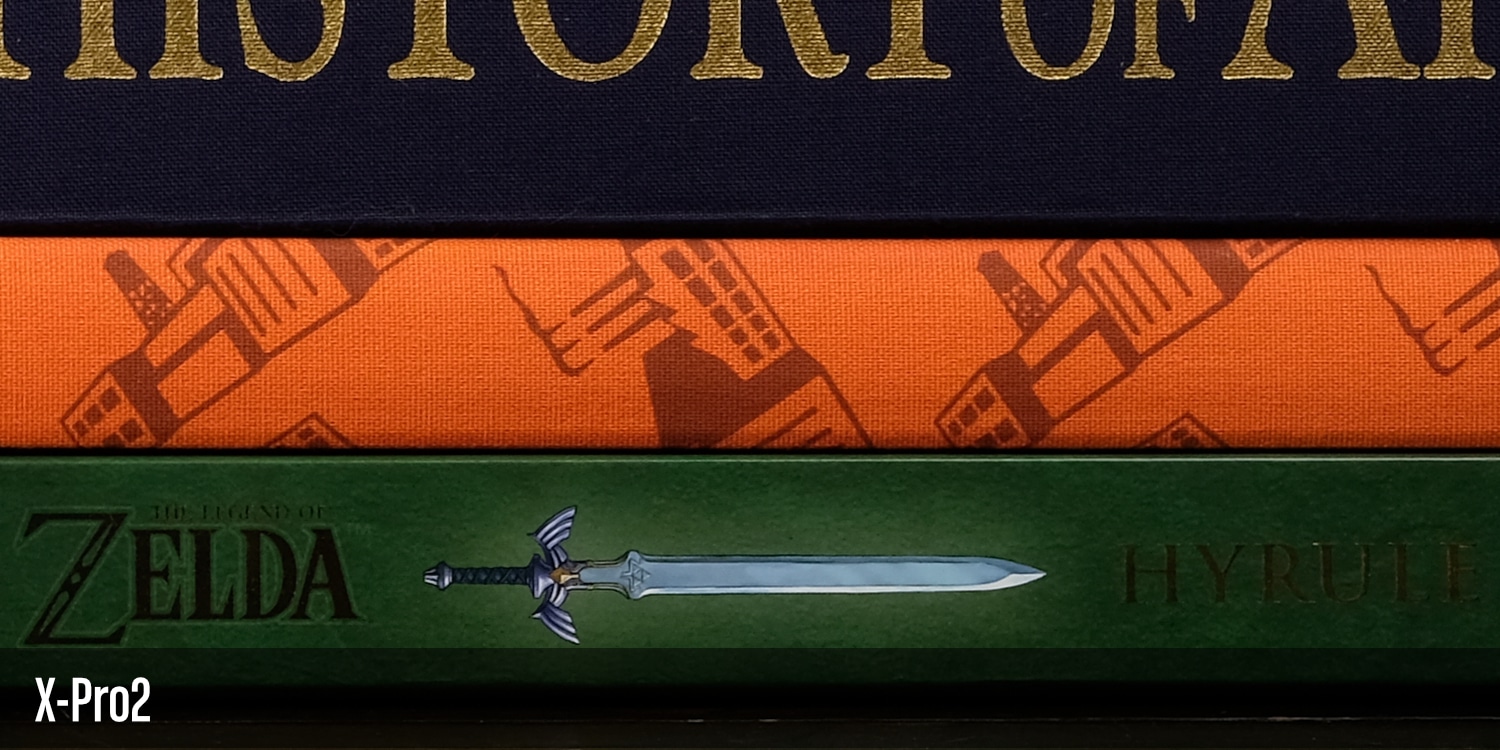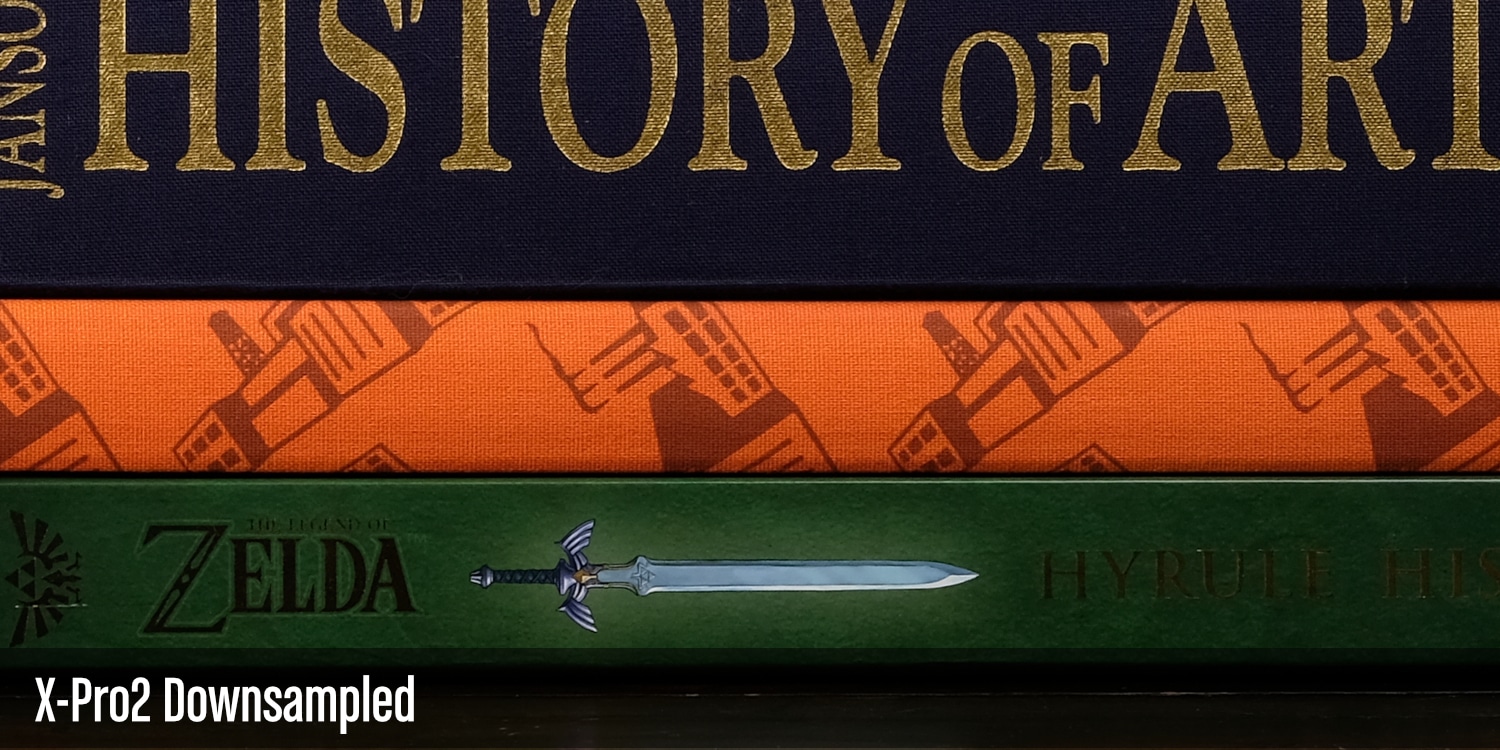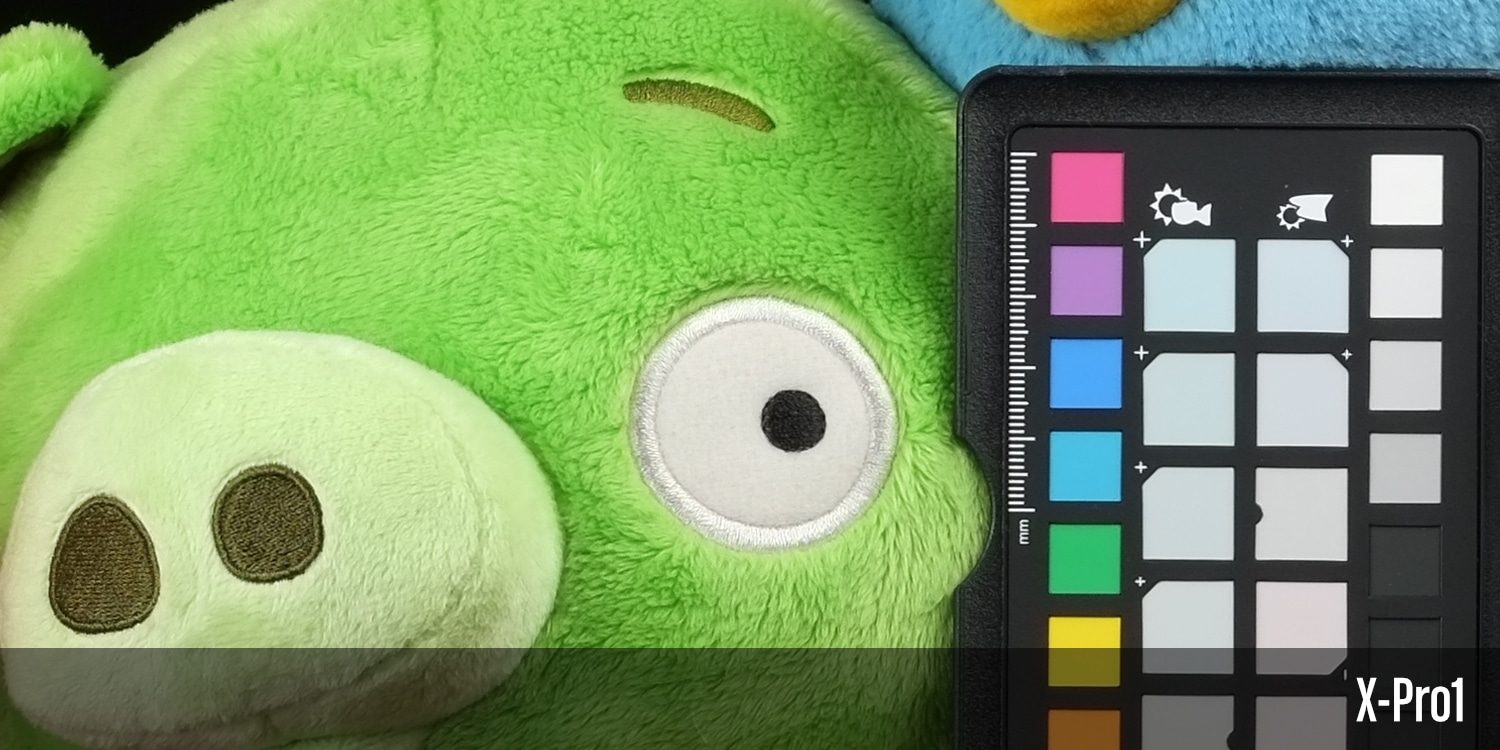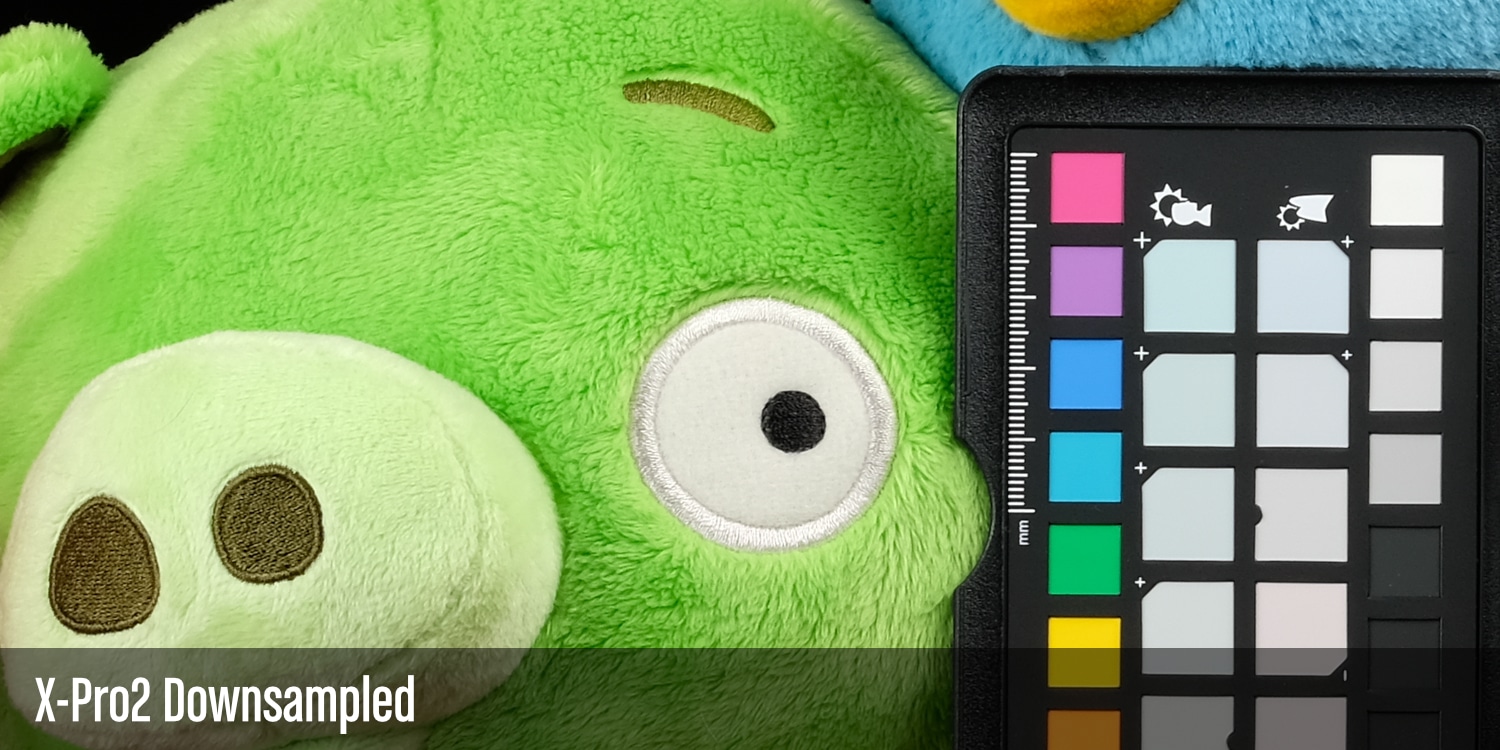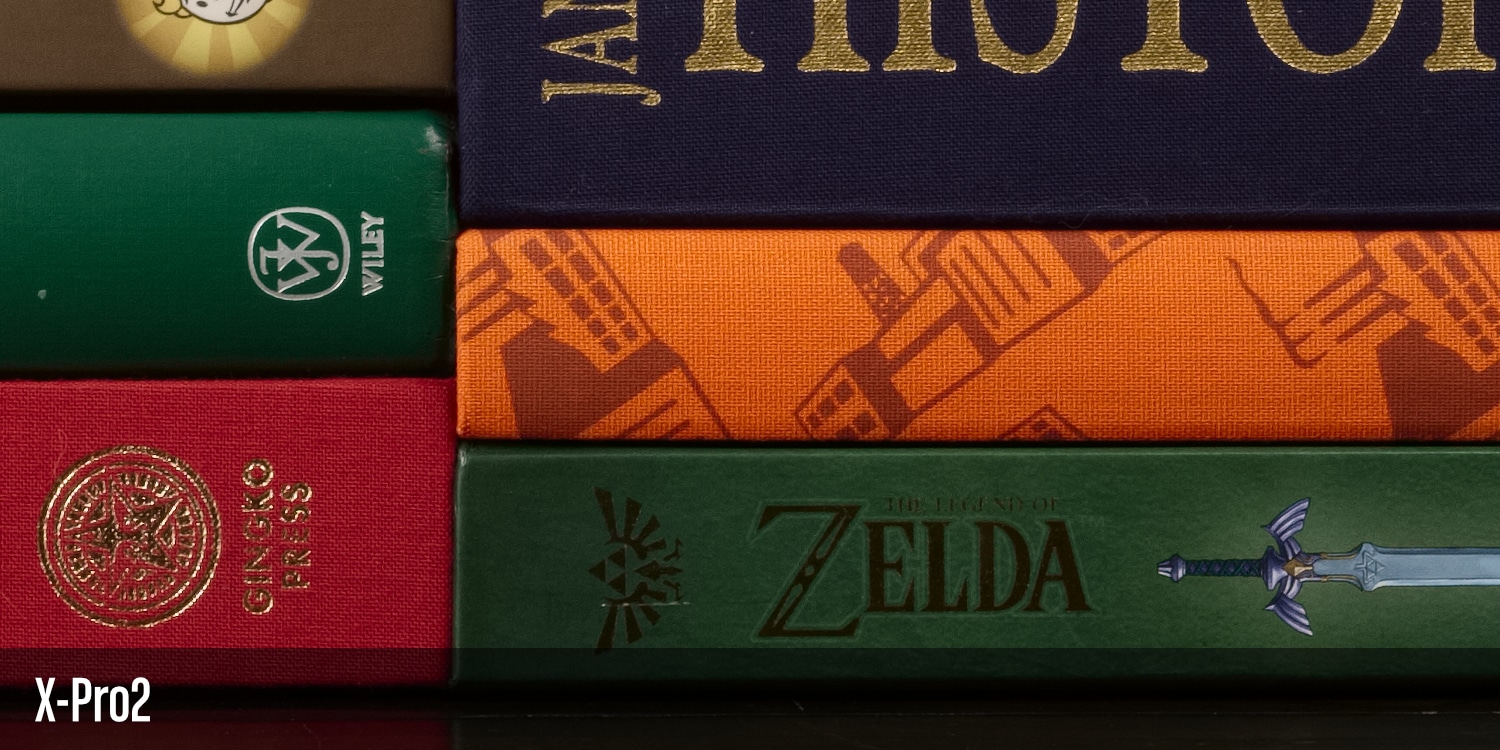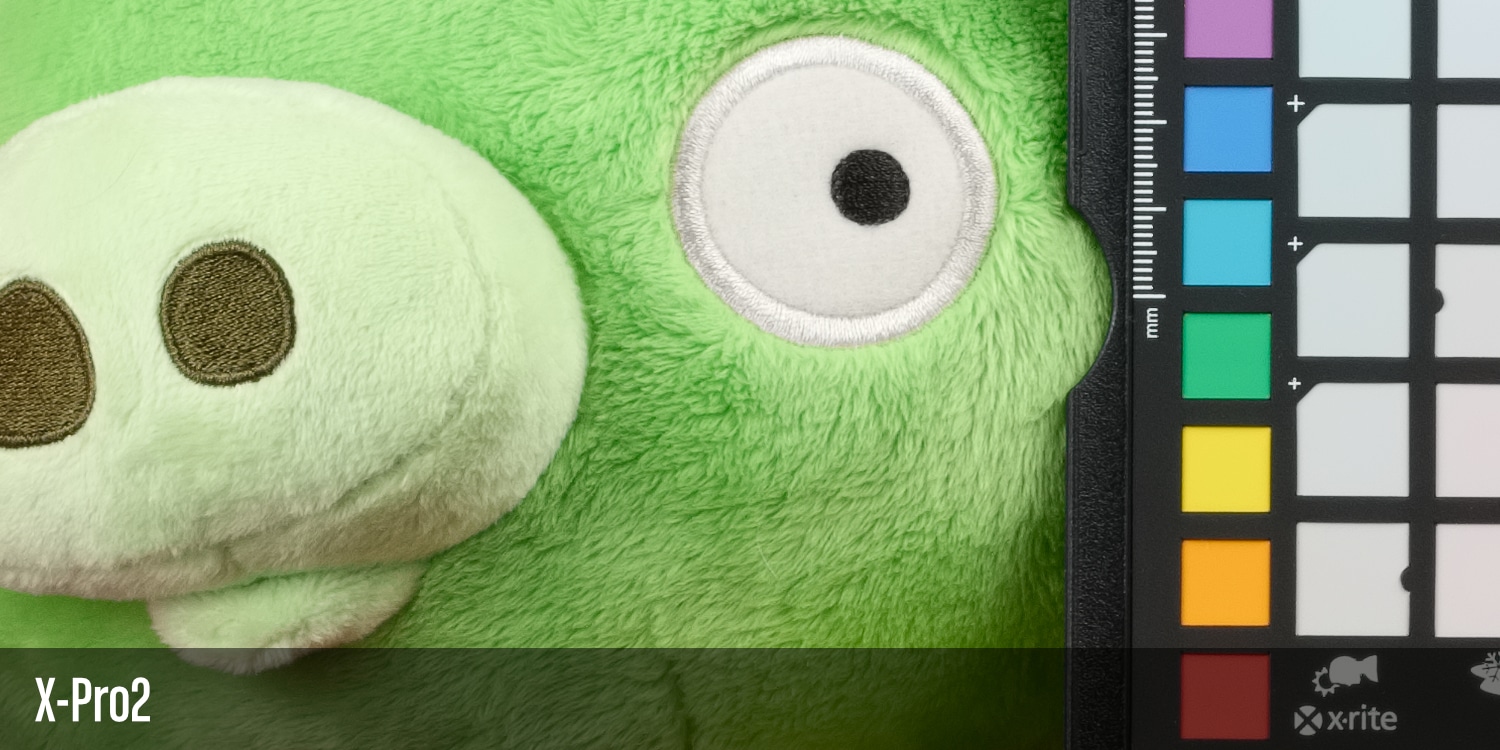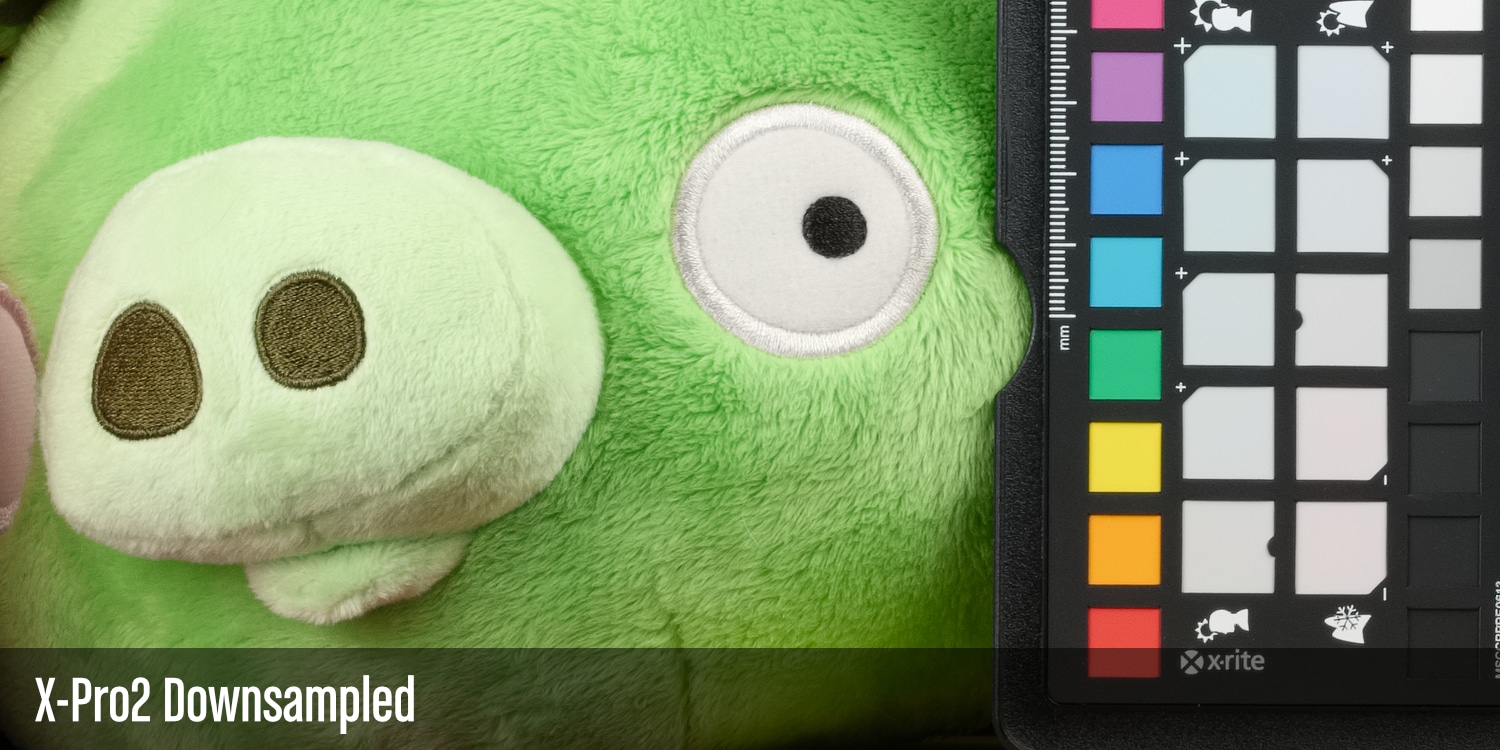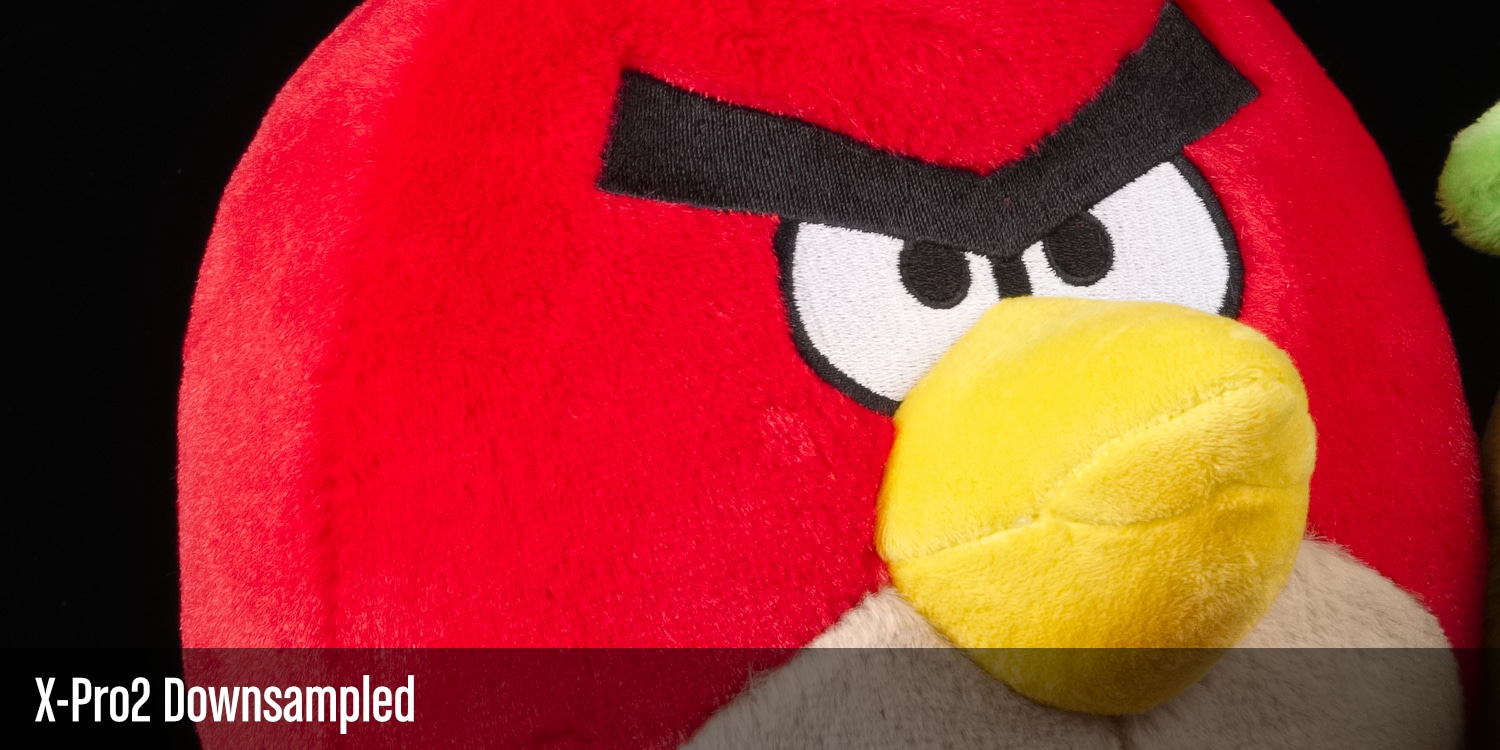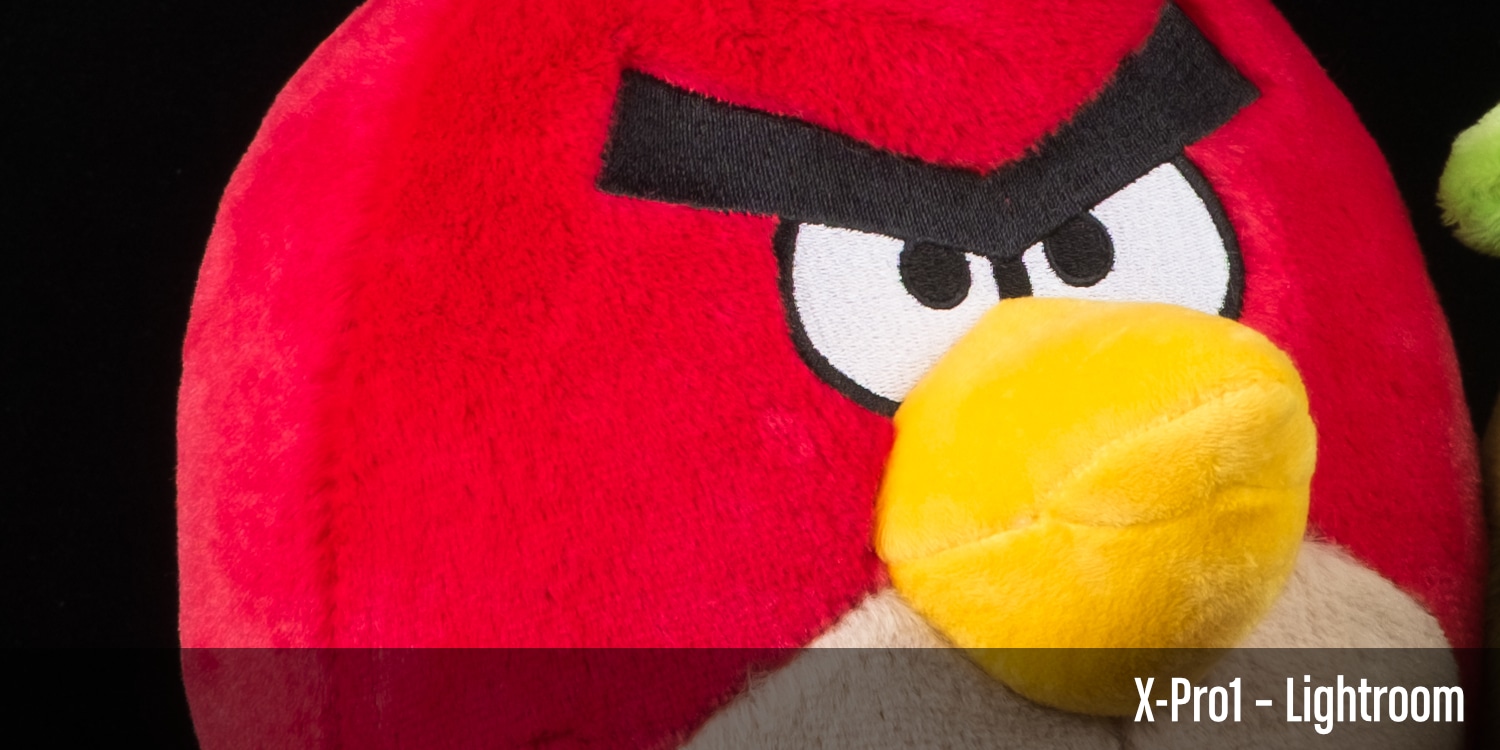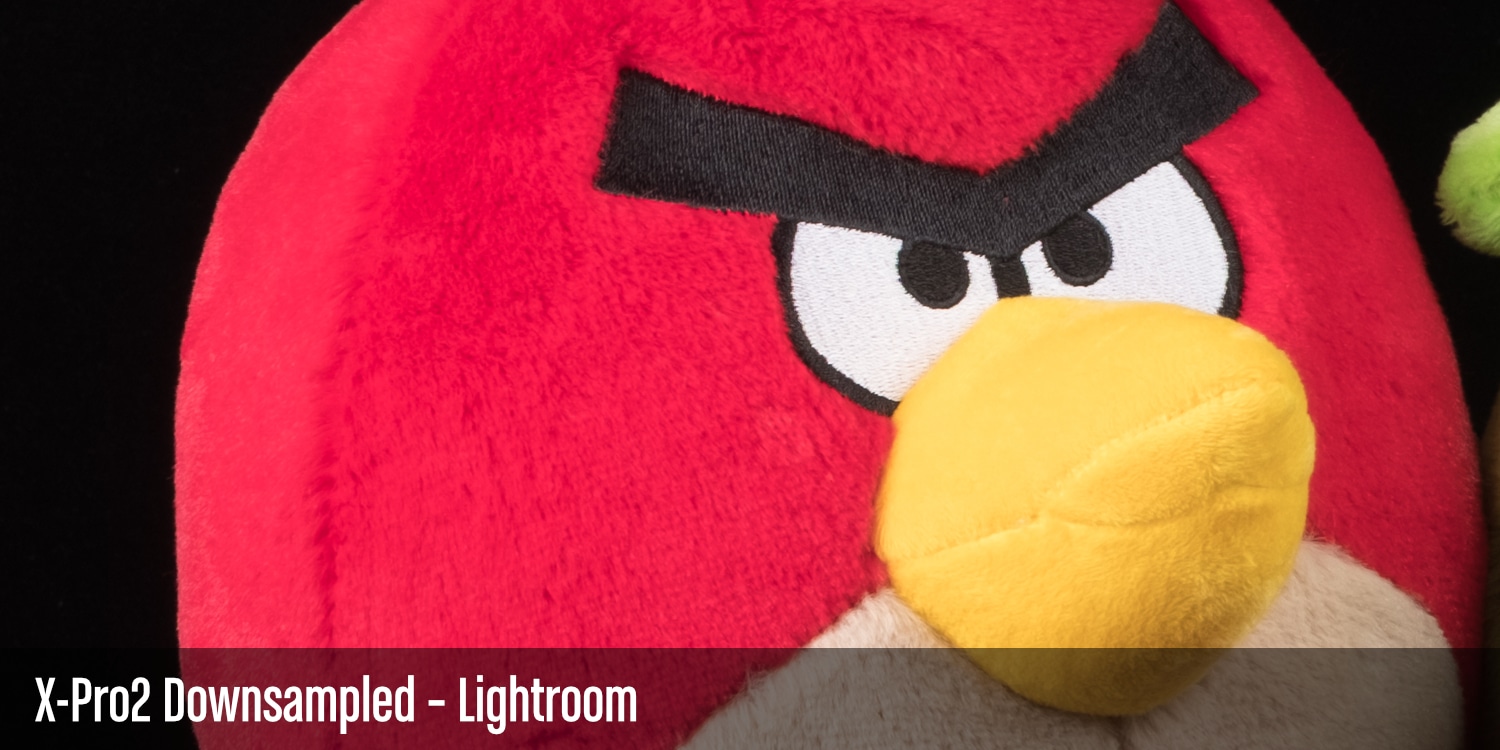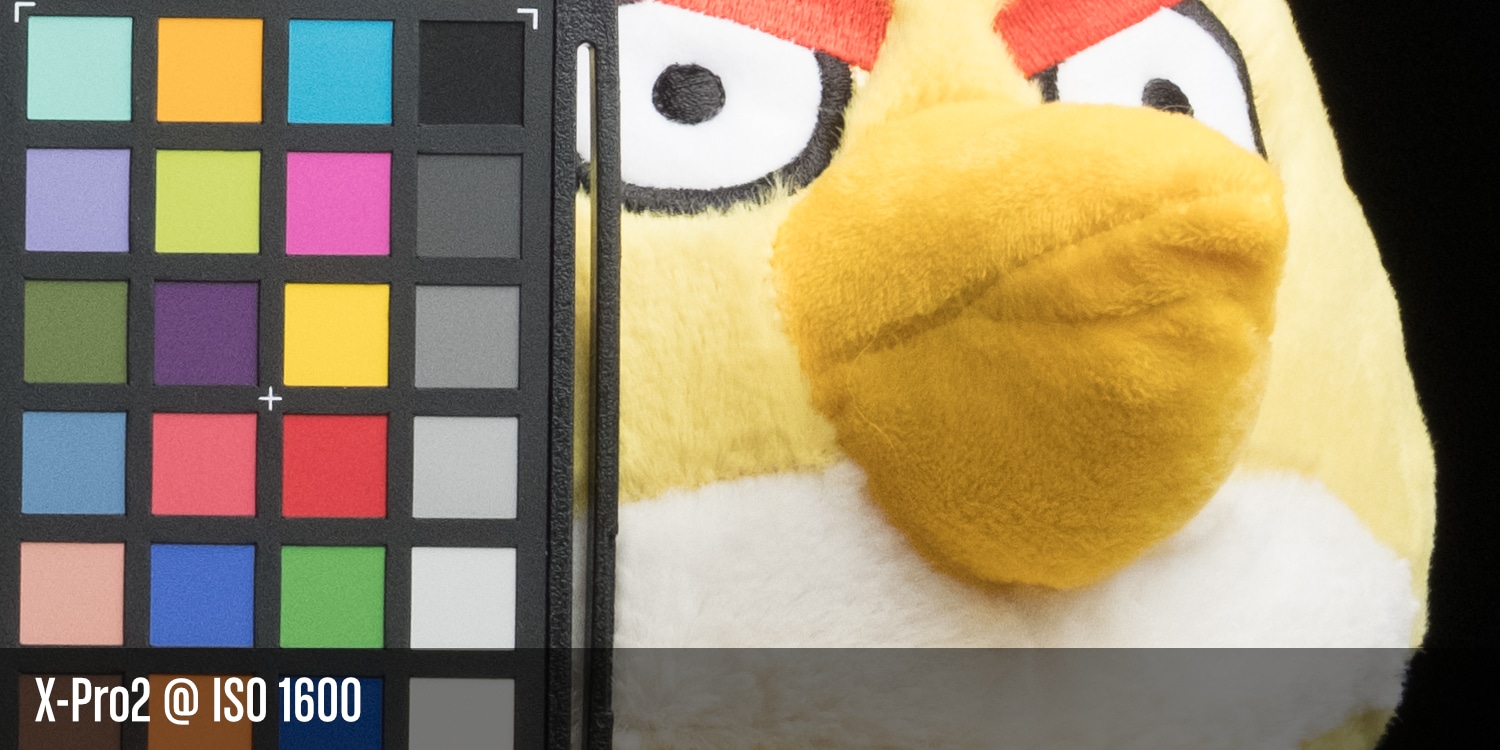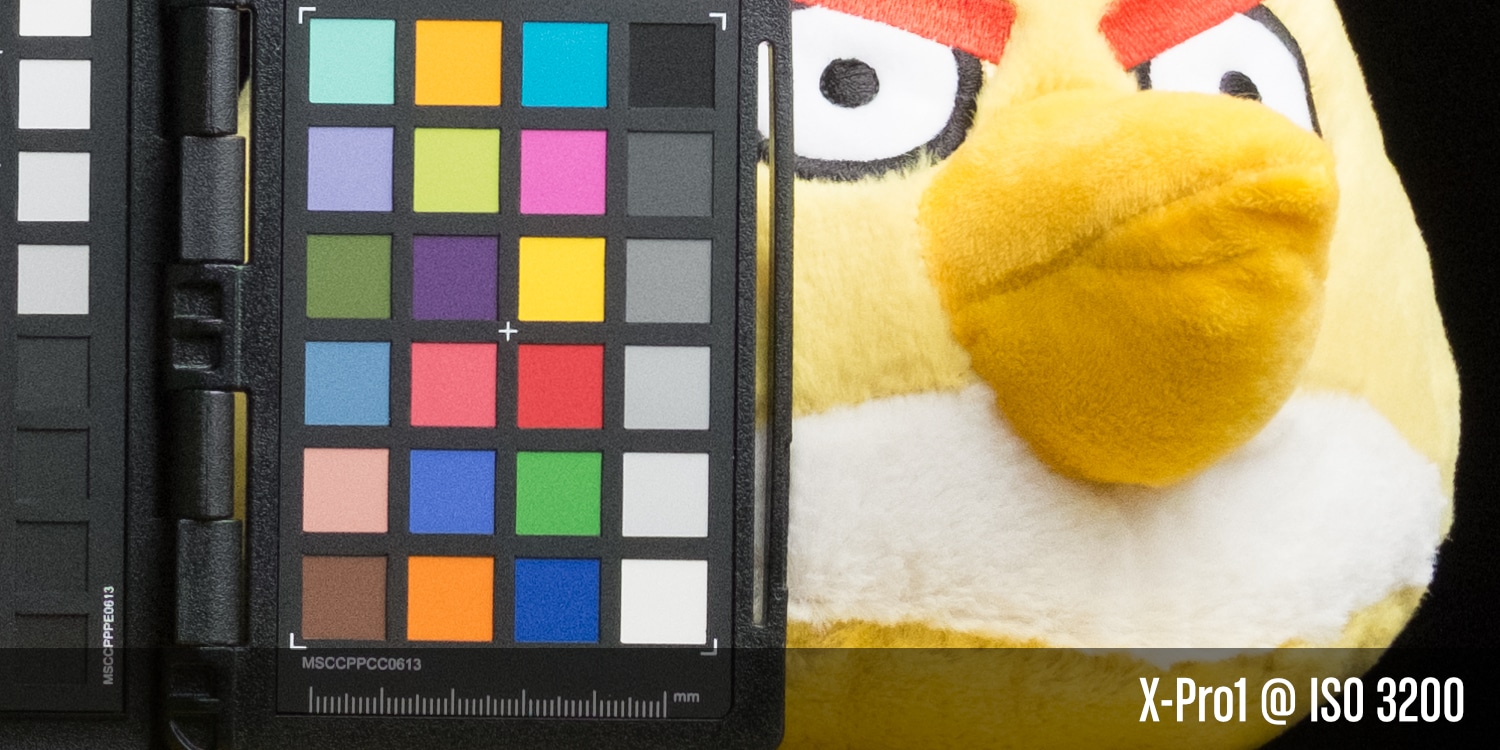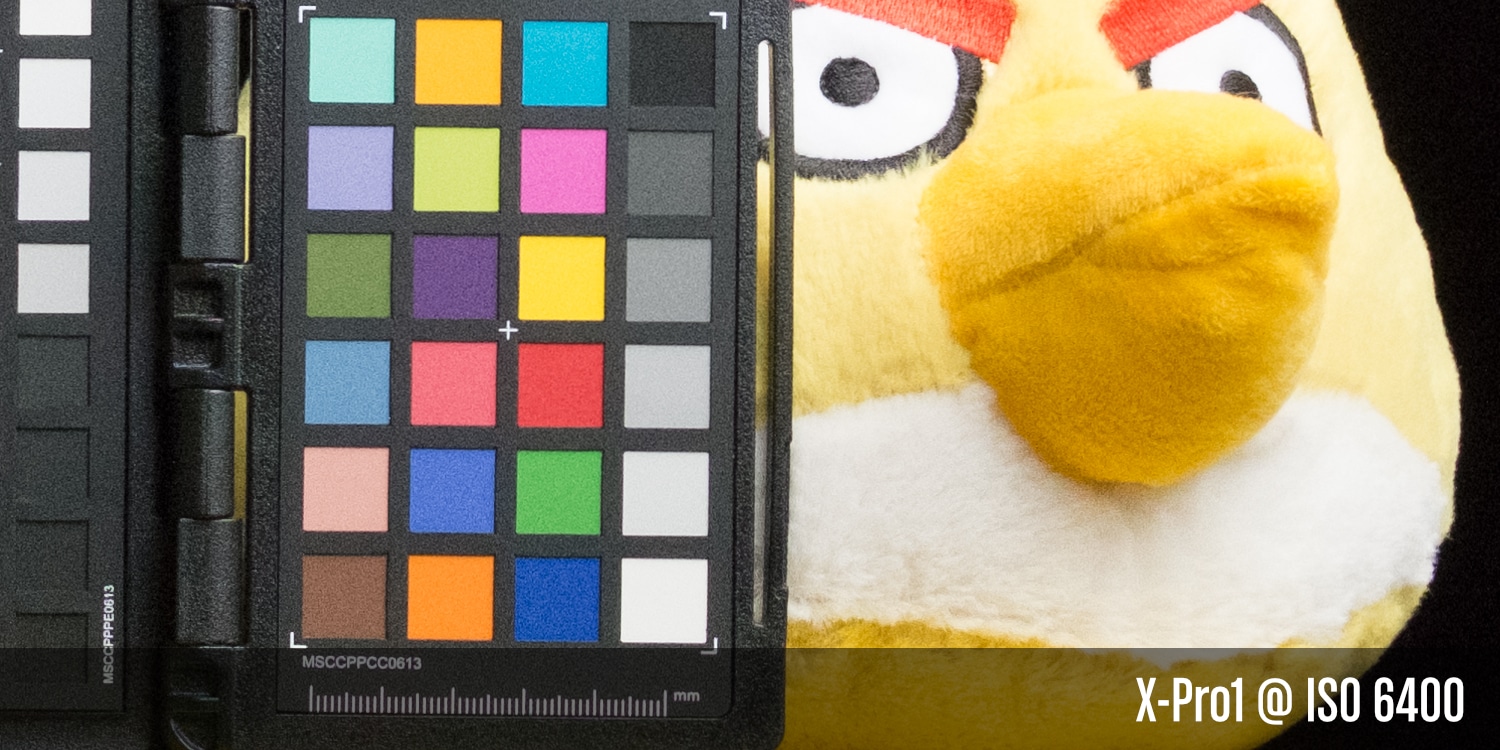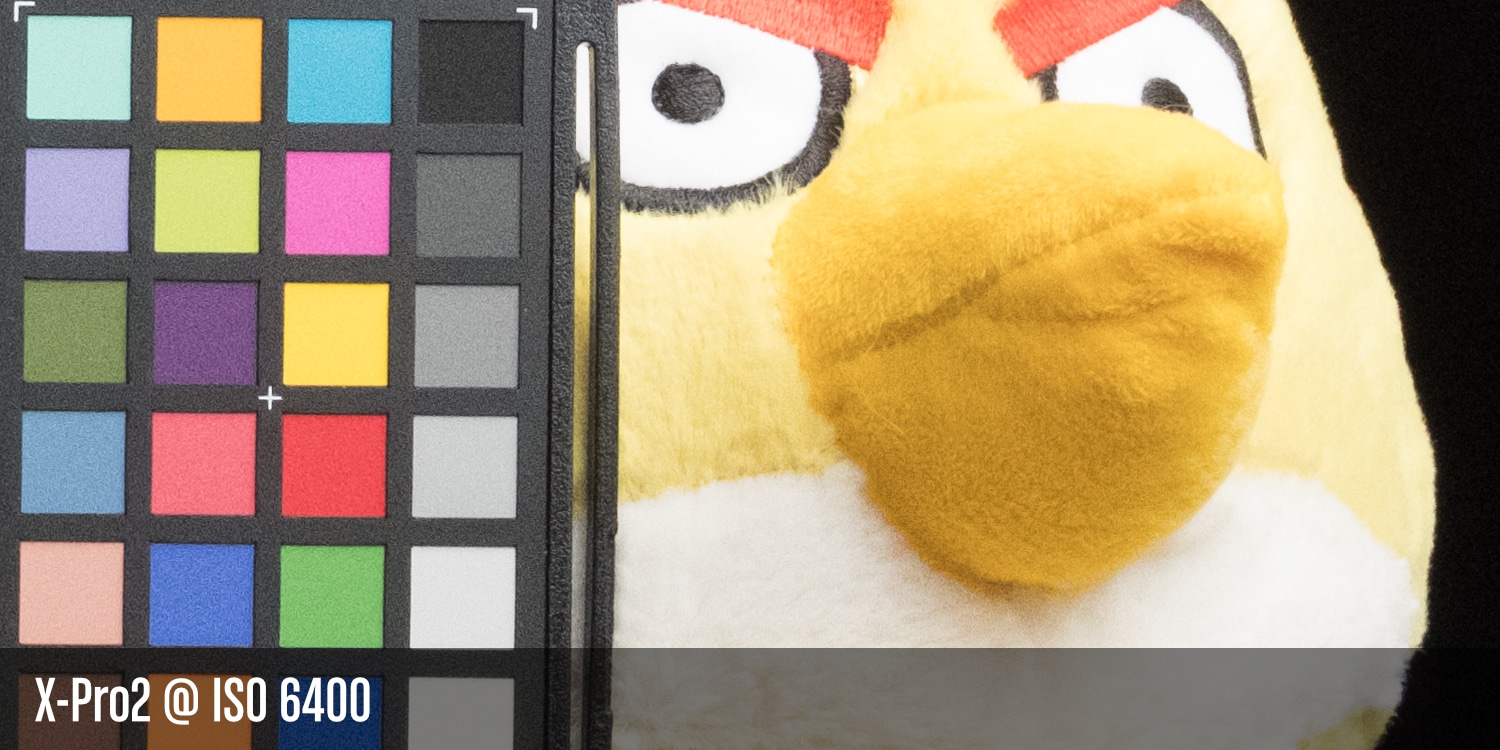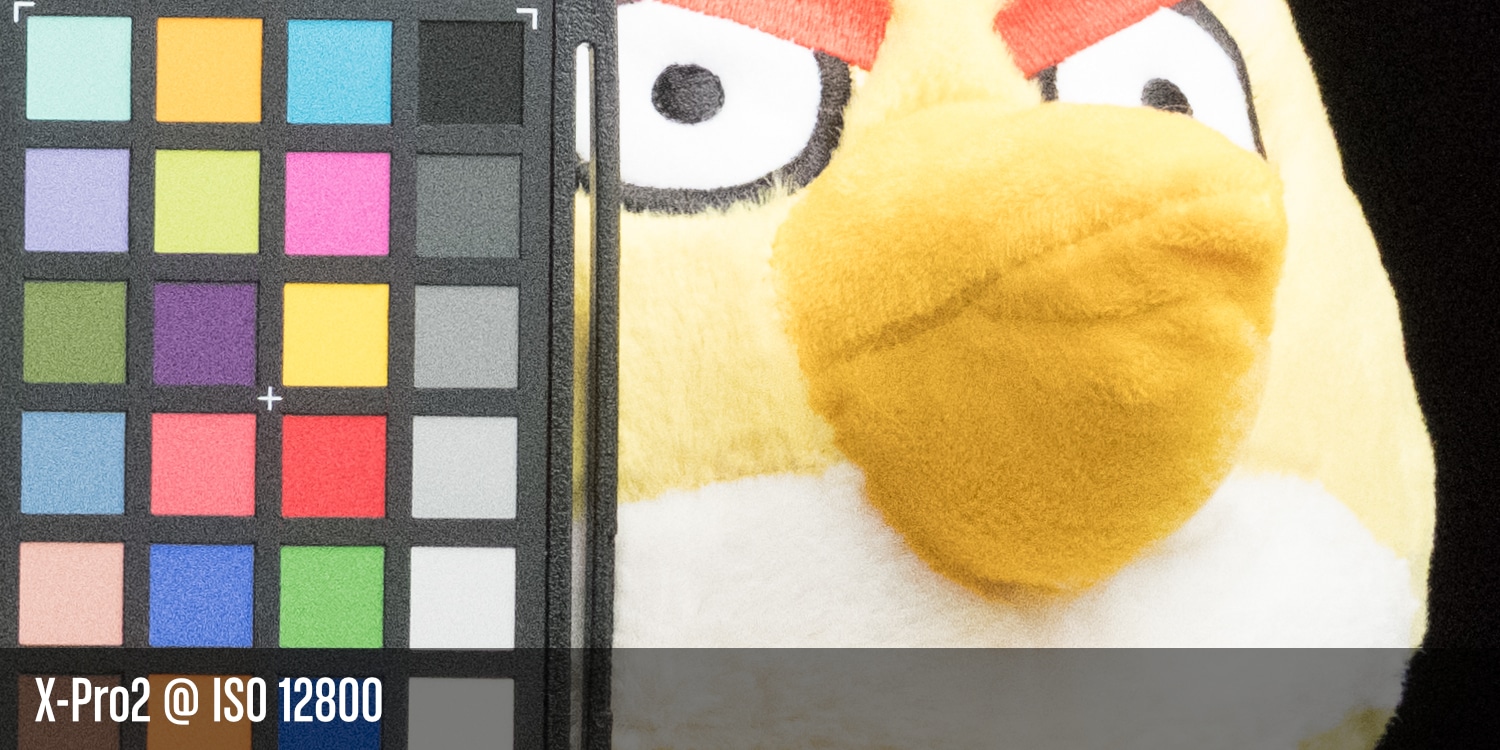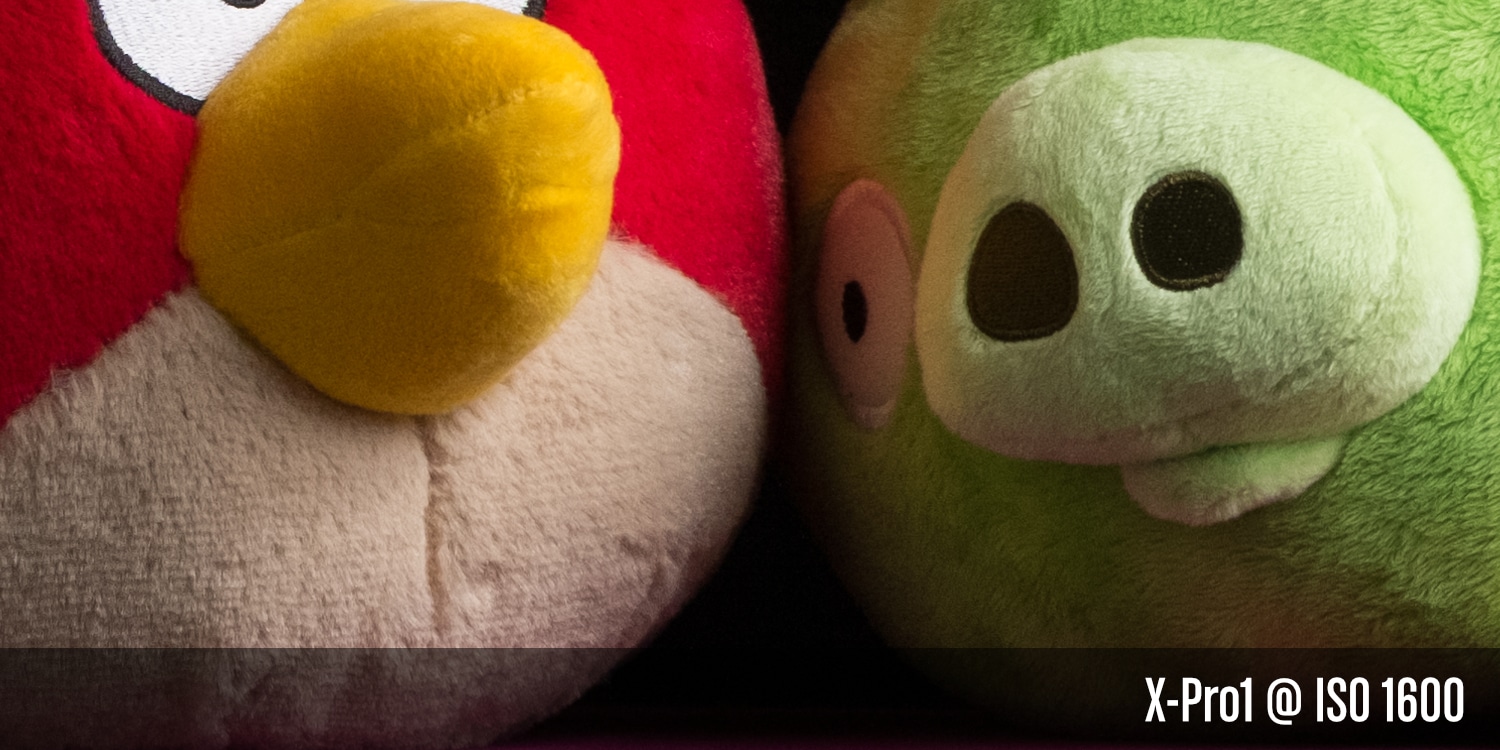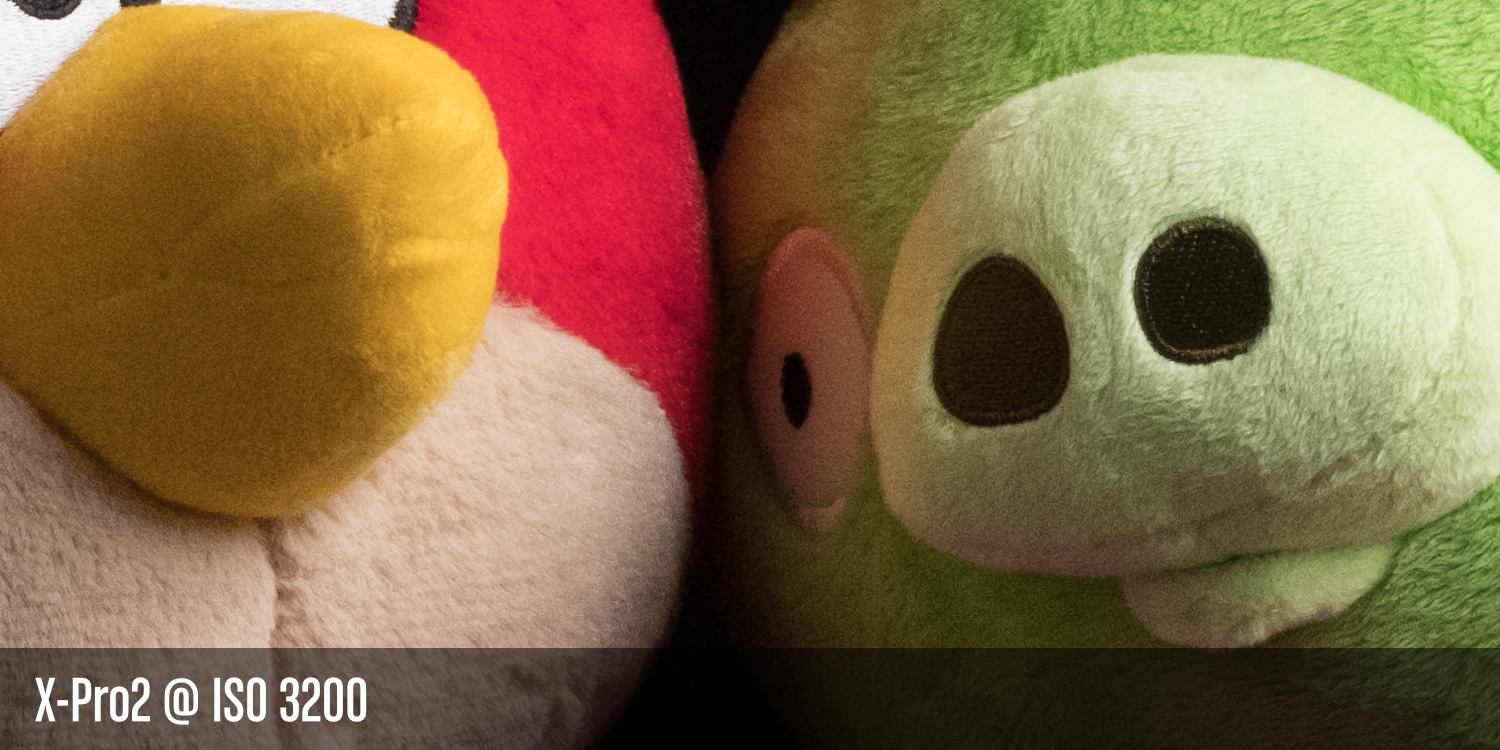Fuji X-Pro2 vs. Fuji X-Pro1, a detailed comparison.
Originally Published: March, 2016
Introduction // Specifications // Build Quality // Performance // Handling // Image Quality // Conclusion
This ad and tracker-free site is made possible by the support its readers.
If you enjoy the content, you can help by using any of the links below. Thanks!
Introduction
When it comes to competitions, there’s typically not much entertainment in seeing one side totally dominate the other. Because of how long it’s been since the X-Pro1 has been released, or even received a firmware update,1 that’s sort of the situation we’re in with this comparison. We know the end result going into it, but seeing just how much the second iteration of the X-Pro line of bodies has improved over its predecessor should still at least be of some interest. I felt compelled to include this comparison for the posterity of the X-Pro, if nothing else. We’ll kick things of with a Specifications table that should have a lot of green in one side.
Specifications
| X-Pro2 | X-Pro1 | |
|---|---|---|
| Announced | January 15, 2016 | January 9, 2012 |
| Released | February 4, 2016 | March, 2012 |
Sensor and Image Capture
| X-Pro2 | X-Pro1 | |
|---|---|---|
| Effective Pixels | 24.3 million | 16.3 million |
| Maximum Image Size in Pixels | 6,000 × 4,000 | 4,896 × 3,264 |
| Sensor | X-Trans CMOS III | X-Trans CMOS I |
| RAF Compresion | Yes | No |
| Native ISO | 200 – 12800 | 200 – 6400 |
| Extended ISO | 100, 25600, 51200 | 100, 12800, 25600 |
| Metering | 256 zone TTL metering Multi, Spot, Average, Centre-weighted |
256 zone TTL metering Multi, Spot, Average |
| Exposure Compensation | ±5.0EV, ⅓ stop increments ±3.0EV via dial |
-2.0EV – +2.0EV, ⅓ stop |
| Face Detection | Yes | No |
| Eye Detection | Yes | No |
| Shutter Speed, Mechanical | P mode: 4s to 1/8,000s S, A, M modes: 30s to 1/8,000s Time: 30s to 1/8,000s Bulb: Max. 60 min |
P mode: 1/4s to 1/4,000s S, A, M modes: 30s to 1/4,000s Time: 30s to 2s Bulb: Max. 60 min |
| Shutter Speed, Electronic | P, S, A, M modes: 1s to 1/32,000s Time: 1s to 1/32,000s Bulb: Fixed at 1s |
N/A |
| Continuous Shooting | High: 8fps Low: 3fps |
High: 6fps Low: 3fps |
| Continuous High Buffer | JPEG: 83 frames Compressed RAF: 33 frames Uncompressed RAF: 27 frames |
TK |
| Continuous Low Buffer | JPEG: To Card Capacity Compressed RAF: To Card Capacity Uncompressed RAF: 36 frames |
TK |
| Auto Bracketing | AE (Exposure) Film Simulation Dynamic Range ISO sensitivity White Balance |
AE (Exposure) Film Simulation Dynamic Range ISO sensitivity |
| Exposure Bracketing Values | ±⅓ to ±2 in ⅓ stop increments | ±⅓ to ±1 in ⅓ stop increments |
| Custom White Balance Banks | 3 | 1 |
| Interval Timer Shooting | Yes | No |
| Classic Chrome and Arcos Film Simulation Modes | Yes | Nope |
Autofocus
| X-Pro2 | X-T1 | |
|---|---|---|
| Autofocus Points | 325 in 25 × 13 grid 91 in 13 × 7 grid |
77 in 7 × 7 grid |
| Phase Detect | 49 Points Middle ⅔ of the frame |
Contrast Only |
| Autofocus Modes | Single, Zone, Wide/Tracking | N/A |
| Focus Stick for Fast AF Point Selection | Yes | No |
Viewfinder
| X-Pro2 | X-Pro1 | |
|---|---|---|
| Diopter Adjustment | Yes! | No, screw in lenses must be purchased |
| Eye Point | 16mm | 14mm |
Optical (OVF)
| Magnification | Approx. 0.36×/0.6× | Approx. 0.37×/0.6× |
|---|---|---|
| Frame Coverage | 92% | 90% |
| Electronic Rangefinder (ERF) Dual Display | Yes | No |
| Bright Frame Simulation | Yes | No |
Electronic (EVF)
| Size | 0.48 inch | 0.47 inch |
|---|---|---|
| Resolution | 2,360K dot TFT colour LCD | 1,440K dot colour LCD |
| Magnification | 0.59× | 0.6× |
| Frame Coverage | 100% | 100% |
| Viewfinder Rotation | Yes | No |
| Updated UI | Yes | No |
| Manual Focus “DUAL” Mode | No | No |
| Refresh Rate | Fast | Slow |
LCD
| X-Pro2 | X-Pro1 | |
|---|---|---|
| Size | 3.0 inch | 3.0 inch |
| Resolution | 1,620k dot | 1,230k dot |
| Updated UI | Yes | No |
Flash
| Flash Included | No | No |
|---|---|---|
| Flash Sync Speed | 1/250 of a second | 1/180 of a second |
Body & Handling
| X-Pro2 | X-Pro1 | |
|---|---|---|
| Storage Media Slots | Two | One |
| Storage Media Max. Speed | UHS-II Slot 1 Only |
UHS-I |
| Start-up Time | Approx. 0.4 sec. | 0.5 sec., with High Performance mode ON 1.0 sec., with High Performance mode OFF |
| Command Dial(s) | Front and Rear | Rear Only |
| Command Dial(s) Act As Buttons | Yes | Yes |
| ISO Dial | Yes | No |
| Exposure Control (Photometry) | Button | Button |
| Drive Select | Dedicated Button | Dedicated Button |
| Shutter Type | Mechanical and Electronic | Mechanical |
| Wireless Transsmitter | Yes IEEE 802.11b/g/n |
What’s WiFi? |
| Wireless Functions | Geotagging, Wireless Image Transfer, Camera Remote App, PC Autosave | None of those things. |
| Dimensions | 140.5mm Wide 82.8mm High 45.9mm Deep |
139.5mm Wide 81.8mm High 42.5mm Deep |
| Weight (Measured) |
435g 495g with Body Cap, Hot Shoe Cover Battery, Memory Card |
395g 453g with Body Cap, Hot Shoe Cover, Battery, Memory Card |
| Body Contruction | Magnesium | Aluminum |
| Weather Sealing | Yes | No |
| Operating Temperature | -10°C - 40°C | 0°C - 40°C |
| Battery Life | Up to 380 frames | Approx. 300 frames |
| Power Management | High Performance Standard Economy |
Power Save Mode On/Off Quick Start Mode On/Off |
| IO | Micro USB 2 Micro HDMI Microphone/Remote Release 2.5mm Stereo Mini Connector |
Micro USB 2 Mini HDMI |
Build Quality
The build of the X-Pro1 was already quite good. The X-Pro2 takes it up a notch with a magnesium chassis, better buttons, and superior rubber in the grippy areas.
Buttons, Dials, and Switches
The X-Pro1 was already quite good in this department. I like it’s D-pad, and the buttons in general are pretty great. The X-Pro2 takes everything up a notch. Yes, the D-pad is just this side of noisy, but outside of quiet environments, it won’t be a problem.
Tripod Mount
The X-Pro1’s tripod mount was weirdly off-centre. This never matter a whole lot to me, because I always buy an Arca-Swiss L-plate for cameras I intend to use with tripods, but it was a pain point for some people, and it’s been rectified on the X-Pro2. The base plate is also a single hunk of magnesium alloy, as opposed to seamed aluminum. This should make the tripod mount a fair bit sturdier.
Memory Card and IO Doors
The X-Pro1 only has two doors, compared to the three found on the X-Pro2. The IO Door (or “Connector Cover”) opens and closes nice on the X-Pro1, but it’s not weather sealed. That’s reason enough to prefer the X-Pro2’s IO Door, which has been moved to the viewfinder side of the body to bring it in line with other X-Series cameras.
Indicator Lamp
I just need to point out that the comically large card write lamp of the X-Pro1 has thankfuly been replaced with something more reasonable.
Performance
The X-Pro2 delivers its first pounding. With contrast-only focus, a slower processor, and overall outdated and outclassed hardware, the X-Pro1 really has no hope in the performance department. The X-Pro2 starts up faster, is ready to shoot faster, acquires focus faster, processes larger images with optional compression faster, and writes to faster memory cards faster. Faster.
Startup Time
Getting into specifics, startup time has been reduced even further from 0.5 sec. to 0.4 sec. Honestly, comparing next to a fully firmware upgraded X-Pro1, I can’t tell the difference, and the delay in my ability to actually flick the power switch at the same is probably have way more of an affect start up time than the cameras are.
Autofocus Speed
This is where the X-Pro2 will reduce the risk of missed images. Nearly two thirds of the X-Pro2’s AF points are phase detect, or 40% of the imaging frame. Even when I drift to the outer reaches of the frame where things are contrast only, the X-Pro2 pulls lenses like the XF 35mm f/1.4 into focus quicker.
Continuous Shooting
The X-pro2 shoots an extra two frames per second faster, and has a buffer that can handle from 3× the RAFs, and infinitely more JPEGs where the only limitation is the size of your SD card.
Handling
This will be another bloodbath, and probably the area I think Fuji made their best decisions.
Focus Stick
We’ll start this section off with my two favourite additions. The first, is the Focus Stick. The X-Pro1 doesn’t have one, and it’s pretty awesome. Whether you’re in Single or Multi-Point Autofocus, or Manual Focus, you’ll be selecting you focus point quicker than ever before.
Walking around casually grabbing street shots and forget where you AF point is? No problem. Just double-click the Focus Stick to reset focus to the centre of the frame, then quickly adjust to the part of the frame you want in focus. I don’t want to use another Fuji camera that doesn’t have a Focus Stick.
Phase Detection
My second favourite addition. The X-Pro1 doesn’t have any phase detect autofocus points. The X-Pro2 has lots. Two thirds of the frame in fact.
Autofocus Points
Want more fine-grain control over exactly where your focus point is in the frame? The X-Pro2 has 273 on offer. The LCD’s and EVF’Í UI becomes a bit cluttered with so many points to choose from when you press the Focus Stick in, but if you just adjust the point by using the Stick directionally, the UI is quite clean. On the OVF, the opposite is true. There’s very little visual feedback, allowing you to see in and outside your frame as much as possible.
Autofocus System
The X-Pro2 feature The New Autofocus System, first introduced with the X-T10, then quickly made available on the X-T1. Being able to set an autofocus zone and letting the camera decide where to focus, versus having to select a single AF point is awfully convenient.
Continuous Autofocus
If the X-Pro1 is capable of Continuous Autofocus, I wouldn’t know about it. Setting the X-Pro1’s Focus Mode Selector to “C” and hoping for the best doesn’t really count. The X-Pro2 features the same outstanding Continuous AF Tracking that was also introduced with the X-T10. It’s faster X Processor Pro should help the X-Pro2 adjust focus on the fly that much quicker.
Face and Eye Detection
Ditto for Face and Eye Detection. Shoot from the hip, ensure faces are properly exposed, grab focus on the closer eye. It all makes for a camera that’s easier to use when the situation calls for it. The X-Pro 2 has it, the X-Pro1 doesn’t.
Button Arrangement
The X-Pro1 will require a lot of left hand shimmying from cradling the bottom of your lens, to accessing the buttons on the left side of the LCD. The X-Pro2 has a fantastic new button arrangement that get you access to just about all the buttons with your right thumb. I only say just about for those with more diminutive-sized hands who are likely to have trouble reaching the View Mode button.
OVF
Visually, the Optical Viewfinder is quite similar, but it brings heaps of new tech previously only found in EVFs like Zone and Wide Tracking, and Face and Eye Detection. The OVF in the X-Pro2 also features an Electronic Range Finder, similar to the one from the X100T, but also improved with two additional zoom modes, and digital split image manual focus assist. It’s not for me, but it’s pretty cool tech.
Magnification is ever so slightly lower at 0.36x vs. 0.37x. In use I see no difference.
EVF
If you haven’t stuck with an X-Pro1 all these years, you’re likely already aware of the progress Fuji has made in the EVF realm. By the time the X-E2 came out, the EVF in the X-Pro1 was already showing its age. As a matter of fact, outside of general operation performance, of which the EVF is part, the X-Pro1’s EVF is the biggest pain point for me, and why I only have one for testing and comparisons. The resolution is much too low, as is the refresh rate in low light.
When testing the EVFs in these cameras in low light, as if I didn’t already know the outcome, the X-Pro1 actually made me a little dizzy. People who are easily affected by motion sickness could probably make themselves sick just by looking around. I wish I was exaggerating.
The X-Pro2’s EVF is in another world. It’s like going from any other stylus to an Apple Pencil on an iPad Pro, or from playing a video game at 15 frames per second to 60.
User Interface
The X-Pro2 is the only body in Fuji’s lineup with a newly redesigned interface. Bizarrely, even the cameras announced alongside it will not benefit from this drastically improved UI, which includes better organization of menu sections, “MY Menu” and an enhanced “Q” (Quick) Menu.
Custom Settings
Beyond the vastly improved UI and extra Film Simulation Modes, the X-Pro2 also sports some additional software niceties like expanded Shadow and Highlight Tones, which are expended to -2 to +4,and Noise Reduction and Sharpening, expended to -4 to +4.
Size and Weight
Hardly worth noting, but the superior build of the X-Pro2 does come with a bit of a weight penalty, and enough of a change in dimensions to mean your X-Pro1 grip won’t fit. Bummer.
As mentioned in my review, I’ll take the added size and weight of the X-Pro2 if it gets me a tougher body and weather sealing any day. The X-Pro1 is lighter 50g, but whether or not that’s a win, I’ll let you decide.
Weight in grams
Image Quality
A large portion of the text in this section will be similar, if not exactly the same as the Image Quality Analysis in my X-Pro2 vs. X-T1 piece. While the X-T1 and X-Pro1 are a processor generation apart, the underlying chip is effectively the same.
A serious bump in image quality ought be expected, given how long it’s been between X-Pro bodies. We’ve got one sensor generation, and two processor generations to take into account.
Resolution
Even though Fuji was still demonstrating how large one could print from a 16 megapixel X-Trans sensor at the launch event for the X-Pro2, the jump to 24 will help with printing large, or cropping a fair bit. Here’s a proportional visual representation of the difference between 16 megapixels, and 24.
The difference is quite striking to me, and is exaggerated further when looking at crops from each sensor. This isn’t a modest bump in resolution, the X-Pro1 has 18.4% fewer pixels than the X-Pro2.
JPEGs (Fine)
Next, we’ll look at a set of JPEGs that are as default as we can make them. The Provia film simulation was chosen, white balance set to 5,900, and all other settings zeroed out.
A brief technical note
When creating these images, I used my XF 50-140mm f/2.8 in part because I don’t have a proper tripod mount for the X-Pro2 yet. These means that the lens was 100% stationary, weighted down when capturing test shots with 3 different cameras, and did not move between cameras.
Looking at the images, you wouldn’t think that was the case, as the framing changed pretty drastically from camera to camera. I’ll be looking into this further, and writing a separate piece about it, but I want to assure you that I did everything within my power to keep these captures as similar as possible, and that should explain the slight variances in composition.
The first thing you’re likely to notice is how different the colours look. Fuji made some pretty substantial changes to their film simulation modes between EXR Processor I and EXR Processor II. Those of you who only have an X-Pro1 and shoot JPEG will want to make note, if you can’t handle any tinkering with your colours, the X-Pro2’s colours might be a sore spot, much like what happened between the X-E1 and X-E2.
JPEG 100% Crops
Next, we’ll have a look at some crops to see just how much more detail those 8 megapixels will get us, followed by how things compare when the X-Pro2 has been downsampled to 16 megapixels.
JPEG Analysis
Now, odds are you aren’t likely to be capturing images of books and plush toys, but what this test image illustrates very well is how much more detail we can expect from Fuji’s next generation sensor. This will make a difference for landscape shooters and even studio portrait photographers. Do you need these extra megapixels for your street shooting or vacation images you post online? No. But for those looking for the best mage quality Fuji have on offer, the X-Pro2 leaves little question. The X-Pro1 almost looks as if there’s a bit of a haze to it. Part of that is the additional contrast from the revised Provia Film Simulation Mode, but it should be no surprise that there is visibly more detail captured with more megapixels.
I do need to bring your attention to the colour red, however, particularly in the third set of comparison crops. The X-Pro2 appears to be suffering from a loss of detail, or simply a blown red channel. My speed lights were the same, and ambient light wasn’t even close to a factor here, so initially I figured this was more Film Simulation Mode tinkering by Fuji. As we’ll see in the RAF comparison, that’s not the case.
RAFs (Uncompressed)
Alright, enough of this in-camera stuff. Let’s look at some RAW files. There’s been a delay in Fuji getting developers other than Adobe getting the documentation they need to properly edit compressed RAF files, so for the time being, we’ll look at Uncompressed RAFs for our comparison. Assuming all applications will soon be able to render Compressed RAFs reasonably soon, I wouldn’t recommend using anything but.
RAF Analysis
I’ll let the images speak for themselves with the exception of saying that the X-Pro2 seems to bring superior detail and clarity with the notable exception of detail in reds, as we saw in the JPEG, and shown in the last comparison image. The red channel appears to be blown out, losing us some detail on the downsampled X-Pro2 file where the X-Pro1 is holding detail admirably well. Scrub the slider back and forth on the left side of the bird to see what I mean.
Now, you might be thinking this could be chalked up in part to my RAW converter of choice. I wondered the same thing, so here’s a comparison of JPEGs rendered from RAFs in Lightroom.
Remarkably, the X-Pro1 seems to cling to detail when the red channel is in danger of being blown out a little better than the X-Pro2 does. I can’t help but wonder if, in an effort to hold green detail better after some criticism that X-Trans couldn’t do green, Fuji ended up sacrificing red detail instead.
ISO
Camera manufacturers have always had a balance to strike between resolution and noise. I say “a” because often it clearly wasn’t the right balance, as companies cranked up megapixels for marketing to the detriment of image quality. So while other Fuji shooters were calling for a to bump in megapixels many releases ago, I was happy to have them wait until they could add pixels without adding noise. Let’s see how they did.
These images are RAFS, right out of the camera with no noise are sharpening. I’ll start at ISO 1600 and finish with a comparison of each camera’s highest native ISO.
ISO Analysis
Overall, we’re not seeing a big jump in ISO performance, rather, a decent increase in resolution without an increase in noise. I haven’t been disappointed with Fuji’s ISO performance to date, but it would have been nice to see more of a reduction in noise form the sensor. Fortunately, the added resolution gives us some more headway to downsample that noise out of existence.
Film Simulation Modes
The X-Pro2 has two more, one with 4 different black and white filters. One could argue the X-Pro1 is missing the two most sought after Film Simulation Modes, Classic Chrome, and ACROS.
That’s not all there is to say about Film Simulation Modes though. As we saw earlier, Fuji wasn’t totally satisfied with their first crack at their own colours. All their Film Simulation Modes have seen refinement between the X-Pro bodies. This is hardly atypical—Nikon, for instance—was always tinkering with their colours—but transparency around these sorts of things would be appreciated. I hope to address the evolution of the Film Simulation Modes in an upcoming article.
Film Grain Effect
As of this writing, the X-Pro2 is the only game in town with a Film Grain Effect. As I mentioned in my review, I’m awfully hesitate to apply this sort of destructive effect to my JPEGs in camera, regardless of the quality of the grain. I would much rather keep an original image and apply the effect to a copy.
One way around this is to shoot RAW + JPEG so you can hang on to the original RAF, or I suppose, RAW only if you like the idea of doing post processing in-camera. I’ve recently become a little faster at tweaking settings for RAW conversion with the cameras, but it’s not something I’d want to do a lot of.
Conclusion
Before now, one could conceivably save a bunch of cash—potentially almost 2 lenses worth as compared to the X-T1—and get essentially the same image quality, not to mention the uniqueness of an optical viewfinder in an interchangeable X-Series body. None of that’s true anymore and the only thing gained by purchasing the X-Pro1 now is the saved money.
It’s tough not to recommend to my readers that they buy the X-Pro2 if they have extra $1,200 difference between the current $499 price of the X-Pro1, and $1,699 price of the X-Pro2 (all in USD). $1,200 isn’t a small amount of money—it’s $100 shy of an X-T1—but judging from the emails I’ve received, it’s $1,200 well spent. I haven’t heard a peep about price, or a word about springing for the heavily discounted last generation.
Should Anyone Get an X-Pro1
There are two kinds of people I can think of for whom the X-Pro1 might be the prudent choice.
- Students: You don’t have a lot of money to spare, and you probably don’t have clients demanding the highest quality images just yet. An X-Pro1 will definitely get you through whatever photographic endeavour your schooling demands of you. Then, you could just as easily turn to the used market. Plus, you might be fortunate enough to have a dark room at your disposal, making digital sort of a moot point anyhow. I don’t care to shoot film anymore, personally, but I’m awfully I’m glad I learned on the full manual Pentax K1000 my Dad bought shortly before I was born.
- Back-up Body: I was talking to two fellow photographers about the X-Pro2, both of whom have been shooting the X-Pro1 for years. The first is perfectly happy with what he can get out of X-Pro1. I don’t know how he doesn’t fall over when trying to compose photos in the dark through that EVF, but he’s happy. The second has transitioned from shooting professionally with DSLRs to real estate with the X-Pro1, where images are routinely online only, and he’s doing just fine. Both of these gentlemen could grab a second body for backup, or simply to change lenses less frequently.
Who Should Upgrade?
This is the camera we’ve been waiting for, for a long time. I imagine most of the people reading this who were contemplating the X-Pro2 had their preorder in before reading any reviews. For those on the fence, if photography matters to you, it’s probably time to upgrade. This is not the time to skip a generation. What you’ve got is old and could very well be busted. The new hotness is here. Place your order with aplomb.
- Outside of a couple lens comparability updates, the last real update to the X-Pro1’s feature-set was Ver. 3.10, released in December of 2013. ↩︎









